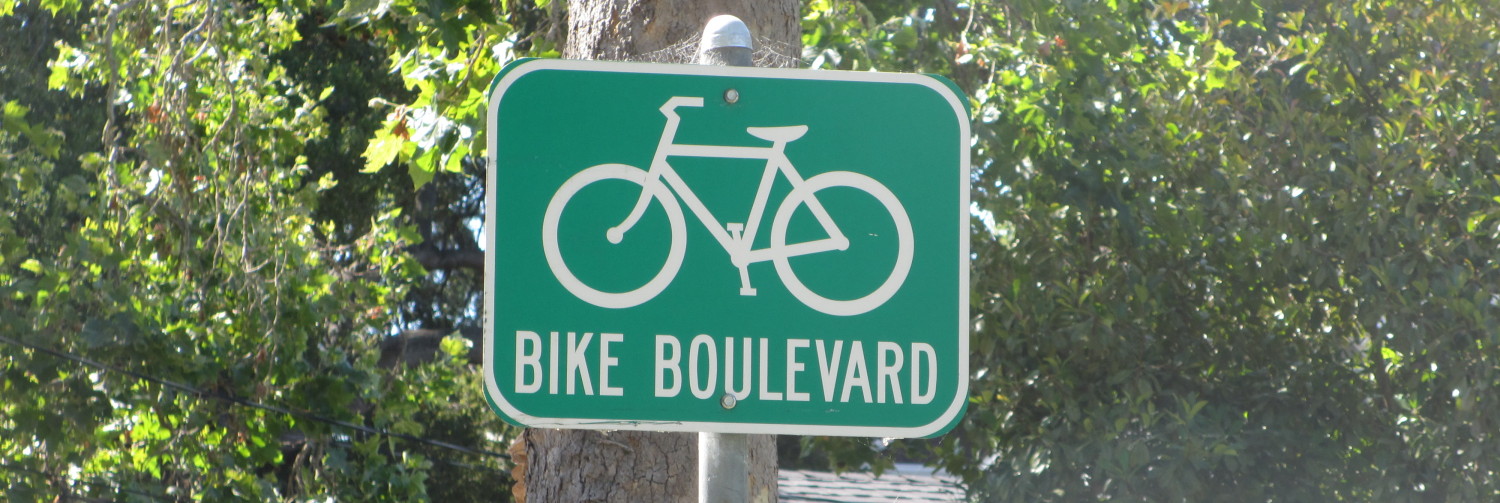The picture shows a typical older street. The walkway is set back from the vehicle curb. There is a row of trees planted between the walk and the curb. Between the trees is asphalt, concrete, or pavers. The trees are tolerated but paved surfaces dominate. This would still rate as excellent by Ottawa standards, should we be so lucky as to have a boulevard of trees on a street.
Here’s a newer installation, in front of an infill midrise apartment. Here’s another:
Notice too the steel frame and glass panels that partially shelter the pedestrians from rain or drizzle. The photo below shows some existing street trees that were protected during construction of the adjacent mid rise infill. There is a parking or bus bay curbside, thus the paved crossing of the plant zone.
Another picture of the same block. Note the lushness of the planting, the curbs that protect the planting beds, the bike post, the underplanting… and that paved block area has wide gaps between the pavers to permit water and air to enter the soil. The pavers are not pseudo-concrete sidewalk set in compacted stonedust that forms a waterproof shield.
The installation show below is perfectly typical for Seattle. One side of every street is being converted to a planting strip.
Turfstone works in damp climates like Seattle. It was invented in Germany, which also has frequent rains. The stuff was all the rage in Ottawa in the 70’s, but the installations did not work well in our continental climate. The concrete wicks the moisture to the surface to evaporate, the planting material dries out, dies, and is drowned/smothered in salt and grit during the winter. Plastic turfstone works better here. The Seattle installation shown below is in front of an office building. You’ll recognize the bike lanes from the August 19th story on Seattle bike lanes.
In front of the apartment building part of the block, someone was caring about the plants.
Don’t you just love this band of decorate tile along the front of this building?
In Ottawa, the old Bank of Nova Scotia building on Sparks Street had giant granite slabs forming the sidewalk in front of the building. They provided a great foreground to the majesty and solidity of the bank. They survived the first incarnations of the Sparks Street Mall, but were ripped out in the 80’s when the current red brick pavers were put down. I’m not so sure about the taste of whomever thought disposable pink concrete pavers were better than giant slabs of granite with a lifespan measured in centuries.
The slabs were cut down into pieces, and used to form parts of the kayak course down on LeBreton Flats. Until the City decided to “stabilize the slopes” about 10 years back, when the granite disappeared from there too.
Cities do tend to become dominated by cars and the interests of motorists. Seattle is no different. But it is fighting back. In this location, hefty rocks were installed to protect the base of trees from damage. They are decorative too. This is an older project, as evident by the small planting hole around the tree.
 Here’s a newer version of that tree+rock scenario:
Here’s a newer version of that tree+rock scenario:
Can you imagine Ottawa planners permitting something this nice? Why someone getting out of a car might twist their ankle on a stone and SUE US. Or their car door might hit a rock and SUE US. Or sit on a rock and find it uncomfortable, and SUE US.
Someone Might Sue Us is the true mating call of the Planner Ottawensis. It obviates the need to ever innovate, do something different, or make a decision that isn’t already in the motorist’s rulebook.












Between the car lanes, parking/loading zones, wide sidewalks, separated bike lanes and tree planting strips, I get the distinct impression that the average downtown Ottawa street will run out of width.
Actually the new 150 Elgin on Gloucester St looks pretty good with trees, planters and bike racks.